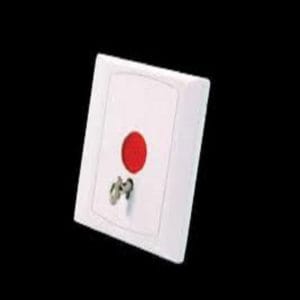Your list is empty, add products to the list to send a request
Smart Home Automation for Upgrade Security

30
Oct
Home automation technologies are transforming security by facilitating remote property monitoring and protection. These systems offer a smooth method of maintaining home protection through connection with contemporary security supplies, enabling customization, energy savings, and user-friendliness.
What Is a Home Automation System?
A home automation system uses a single platform or app to link and control several home appliances, including lighting, cameras, locks, and sensors. These gadgets can be controlled from a computer or smartphone and connected via the Internet of Things (IoT). This network improves convenience and security by allowing homeowners to automate, monitor, and manage various parts of their home environment.
How Security Is Improved by Home Automation
A home automation system increases security by using intelligent features like motion detection and real-time monitoring. These systems help homeowners monitor their property from a distance and receive notifications of possible problems, such as motion near entryways or when a door is left unlocked.
Important Security Elements of Automation Systems for Homes
Remote Surveillance: Integrated cameras offer round-the-clock video surveillance, and smartphones can access high-resolution feeds. With this service, homeowners can monitor their property from anywhere.
Smart Locks: If homeowners forget to lock up, smart locks allow them to remotely lock or unlock doors, adding an extra layer of security. Many systems also allow visitors or service providers temporary access, improving convenience without sacrificing security.
Motion Detectors and Sensors: These gadgets warn when they sense movement in particular house parts, like windows and doors. When used with video monitoring, they provide a thorough view of any abnormal activity.
Automated Lighting: Intelligent lighting systems can be set to turn on automatically at night or when a visitor enters the house. This can discourage would-be burglars and give the impression that the house is occupied when it isn’t.
Video Doorbells: A video doorbell ensures safe and controlled entry to the house by providing live video and facilitating smartphone conversation with guests.
How to Configure a Security-Related Home Mechanisation System
Setting up a reliable home mechanization system with complete, easy-to-use security kits is very simple. To set up an automated home security system, follow these important steps:
- Choose a Control Hub: With a single platform connecting all devices, the hub is the central control point for a home mechanization system. Apple HomeKit, Google Nest, and Amazon Echo are a few well-liked choices. Verify that the devices you wish to integrate are compatible with the hub.
- Select Important Security Equipment: Incorporate motion sensors, cameras, doorbell cameras, and smart locks to make sure your system can efficiently track movement and cover important entry points.
- Set up and synchronize devices: Install each device according to the instructions. It is connected to your hub and reachable from your computer or smartphone.
- Configure Automation and Alerts: Adapt automation and notifications to your way of life. For example, you can set up automation that activates the lights when motion is detected or program the system to send alerts when someone approaches the front door.
- Secure the Network: A home network is necessary to defend the home automation system from online attacks. To improve security and privacy, use a virtual private network (VPN) and create a strong password for your Wi-Fi network.
House automation systems’ advantages for security
There are several benefits to investing in a house automation system for home security. Here are a few main advantages:
- Remote Management and Surveillance: Thanks to remote access, homeowners can monitor their property while away. This feature will help those who travel frequently or work long hours.
- Custom Security Alerts: By informing users of anomalous activity, custom alerts improve responsiveness and lower the possibility of false alarms. In an emergency, family members or neighbors may also receive notifications.
- Increased Energy Efficiency: Automated systems can lower utility costs by controlling lighting, thermostats, and other appliances without sacrificing security or comfort.
- Integration with Other Security Supplies: House automation systems can be integrated with existing security supplies, such as monitoring services and alarm systems, to establish a complete security setup.
- Comfort: An intelligent security system in your house provides comfort, especially when you are not there. There is a comforting sense of control when you can check on your house anytime.
Conclusion:
House automation systems are revolutionizing how we think about home security by offering clever, adaptable solutions that improve control and safety. These systems allow homeowners to control their security from any location and provide peace of mind with features like controlled lighting and remote surveillance. House automation systems invest in convenience and safety by emphasizing interoperability, ease of use, and data security, which helps you and your family live in a safe environment.













